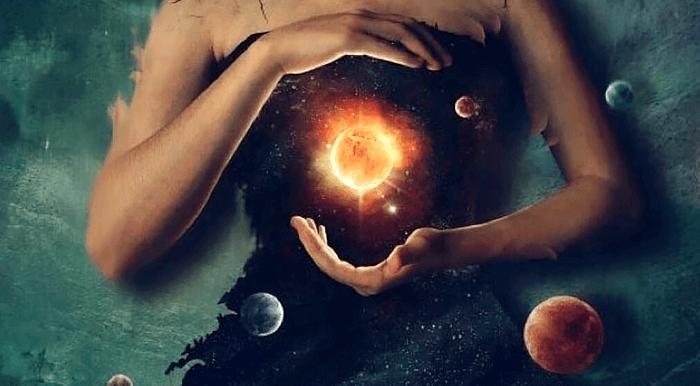
Abdominal Bloating, Low Back Pain: Mysteriously Rooted Symptoms Solved by Acupuncture
As an acupuncturist I notice several types of people who come to me. Those who have heard acupuncture is highly effective for certain conditions such as pain or fertility. Others who want a more holistic and even spiritual (mind-body) approach to healing. And finally those who have mysterious conditions that their primary doctors cannot seem to figure out.
There are two pathologies that create “mysterious symptoms” that are often hard to diagnose and understand: blood and phlegm stagnation. This is the major way that Chinese medicine diagnoses conditions: states of energy and humoral excess or deficiency.
The major diagnostic parameters developed during the Tang era of Chinese medical history (7th Century) were Blood deficiency or stagnation; energy (Qi) deficiency or stagnation; fluid (Yin) deficiency or stagnation which includes “dampness” or “phlegm.” And at the deepest level, constitutional “essence” (Yang) deficiency or excess in the form of “wind” or energetic chaos.
As acupuncturists, we diagnose according to what humor or energy form is excess (stagnant or exuberant) or deficient. We also diagnose according to which organ system and acupuncture channels are being affected. Discerning if the condition is located on the external or internal aspects of the body is also part of a classical diagnosis. From these parameters we take into account how a condition has moved and progressed in the body and what complications have arisen.
Stagnations often occur with an underlying deficiency, complicating the scenario. They tend to muddy and obscure a person’s health picture profile. They are also chief elements that maintain “latency” where an unresolved issue lurks, hides and lingers in a subacute state. This can create symptoms that seem mysterious, making it difficult to identify where the problem is coming from.
I treated a man recently for bloating and tenseness in his lower abdomen. We initially thought the situation was due to digestive problems, or “food stagnation” as it’s called in Chinese medicine. Herbs and acupuncture targeting this stagnation helped but failed to resolve the condition. The bloating was accompanied by lower back, hip and leg stiffness pain. There was also mild constipation, hemorrhoids and gas. He also complained of sexual dysfunction in the form of reduced erections and sexual desire.
Diagnostically as an acupuncturist I rely on pulse and tongue diagnosis. However when I’m stumped I go the ancient theory of the “Luo-Connecting Vessels” as detailed in the medical classic Ling Shu: the Spiritual Pivot – one of the earliest and most revered textbooks in Chinese medical history.
The pulse is based on feeling energetic, blood and fluid movement in the channels and organs. But the theory of the Luo Vessels is based on visibility: looking at the body itself to find visible signs of stagnation or deficiency in the body.
The theory of the Luo teaches that stagnations, especially if they are holding something latent or hidden will block the body from showing its true condition. Therefore blockages must be cleared for a more accurate assessment to be made. Many mysterious symptoms are therefore due to the stagnation that is holding something hidden, and not indicative of the true root problem.
The Luo Vessels manifest states of blood and phlegm stagnation. They are vessels that create visibility: signs of blood and phlegm stagnation on the surface of the body in the form of varicosity (blood stasis) and nodules (phlegm stasis).
Chapter 10 of the Ling Shu details the classical symptoms of both the Primary Channels (which are diagnosed through the pulse) and the Luo Vessels which are diagnosed through surface visibility.
Classical Luo Vessel symptoms often indicate blood or phlegm stagnation in certain regions of the body. My patient had symptoms associated with blood stagnation in the Kidney, Spleen and Liver channels. There were also signs of phlegm stagnation developing, as blood stagnation can often lead to fluid complications in the form of phlegm.
When the cause of symptoms cannot be identified via the usual diagnostic methods (tongue and pulse diagnosis), its often necessary to observe the visible signs on the body. They can show areas of blockage obscuring the true picture of a person’s health. This is why looking at the body and its signs, as well as using palpation is often necessary when diagnosing a problem. Sometimes the pulse and tongue are not enough to understand the problem, especially when there is blockage creating latency.
The Kidney’s Luo Vessel when affected by blood and phlegm stagnation manifests difficulty in urination and/or defecation as well as pain in the low back and genitals. There are often visible signs along the Kidney’s Luo Vessel trajectory: spider veins along the inner foot and/or nodules or lipomas. There may also be visible sings around the region of the low back.
The Spleen’s Luo manifests abdominal pain (in the intestines and stomach) and distention that feels as firm as a “drum.”
The Liver’s Luo manifests genital symptoms.
All Luo Vessels can be assessed via classical symptoms and/or visibility along the trajectories of the channels. Usually there will be signs of both.
Visible spider veins or lipomas that can be felt through palpation are the first thing I look for when a person complains of one of the classical symptoms of the Luo Vessels.
There are many ways of gathering information from a patient. I will start by asking them about how they feel: what they want to talk about, usually to set the tone for what they want to work on. Then I will feel the pulse to see what the body wants to tell me. I will look at the tongue for more information, especially the state of the digestive system. And finally I will look at the body and palpate the channels and regions of the Luo Vessels for more information about stagnations and blockages.
The art of Chinese medicine involves identifying where a condition currently resides in the body and what types of excesses (stagnations) or deficiencies are currently in play. From this an idea as the origin of the problem and its transformations and progressions is formed, allowing for prognosis as to where the condition will move and progress next.
In terms of Luo Vessels, blood stagnation can transform into phlegm stagnation. On a mental-emotional level this shows itself through an issue that has a sense of conscious awareness to it (blood stagnation) turning into something that lacks awareness.
Phlegm stagnation creates symptoms or feeling states, such as depression, that have no known storyline to them. The person will often be unaware why they are feeling the way they do. This is seen as a progression of something that started as blood stagnation and developed into phlegm, making the problem even more mysterious. The problem can also seem to come and go, disappear and then reappear for no apparent reason.
Involvement of the Luo Vessels usually always involves a mental-emotional component, which is either a cause the problem or becomes a result of the stagnation.
In all conditions we must be aware of any deficiencies in the body. Underlying deficiency of blood and energy is a major cause of problems, often giving rise to stagnations.
There’s always a debate in Chinese medicine: what is the cause of disease? Is it an excess: something from the outside world that challenges our body and makes us sick? Or a type of excessive behavior, lifestyle choice or emotional state? Or does the body become overwhelmed by these excesses due to some type of pre-existing deficiency?
There are arguments for both ideas. Excess can lead to deficiencies, but also deficiencies allow excesses to overwhelm the body more easily. They often coexist with one another.
There is a popular theory in Chinese medicine that teaches whenever we try to tonify or build something in the body, like blood or energy, we must also circulate and move that energy to treat and prevent stagnation from forming. The same is true for trying to move stagnation. Many stagnations will only move if we also tonify and build, as the body will lack to energy and resources to move stagnation unless it is also strengthened. But deeper than that, the body will only feel ready and wiling to let go of something if it feels something else is being replaced, usually of greater quality and value than that which it is eliminating.
The medical classics teach that the Luo Vessels become active when the Lungs lack sufficient energy to “diffuse” their energy. The Lung’s are therefore seen as the primary site of deficiency that allows stagnations of blood and phlegm to develop. The Lungs are the primary organs for letting go and also for energy, blood and fluid movement in the body.
Lung energy has two vectors of movement: up and out; down and out. They “diffuse” to create exhalation and sweating. They descend for inhalation but also for elimination via the bowels and urination. The Lungs also provide energy movement for blood flow, which also includes emotional release.
Lung energy is financed by the Spleen and Stomach – the digestive system which is also seen as the system that manages thought. The ancient Chinese call this aspect of the mind: the Yi, or ability to be mindful.
Each of the major internal organs are seen to have a spiritual aspect to them that supports consciousness. These spiritual aspects are said to be “housed” in each of the major internal organs. The Spleen-Stomach houses the Yi- mindfulness, the Lung houses the Po which relates to instinctual drives and the ability to let go.
The mind-body connection is very important in Chinese medicine. The ability to let go is as much physical as it is emotional and mental. The energy of the Lungs involves both. The Po manages all aspects of letting go. Therefore a problem with letting go, be it constipation, obsession or grief is an issue of the Po and therefore the Lungs.
The spiritual aspect associated with the Kidneys is the Zhi or willpower. This involves both ambition, but also the basic will to live, to survive and thrive. The spirit of the Liver is the Hun, the non-corporeal soul, which is involved in the ability to dream, vision, make plans and associate on an intuitive level. Psychic powers are under the control of the Hun.
There were obvious stagnations occurring with this patient. There were subtle lipomas felt around the floating ribs and abdomen, suggesting phlegm stagnation in the regions associated with Kidney, Liver and Spleen. These findings corresponded with the symptoms presented.
Many sources say phlegm stagnation is always based on a pre-existing deficiency. Therefore for this patient I decided to begin treatment by tonifying the blood and energy of his Kidneys, Liver and Spleen via deeper acupuncture channels that relate to the deepest aspect of the Luo Vessels.
There is a theory in Chinese medicine that anything being held in the Luo (as a latency) will travel into the “source” or constitutional level of the body. Latency mean something unresolved becomes hidden, held in deeper levels of the body, allow it to becomes somewhat asymptomatic or contained. Yet overtime this will create a depletion on the body’s internal energy. The “source” of all energy in the body will begin to lose its vitality, drained by taxation from the unresolved issue.
The major acupuncture channels used to treat the “source” are the Extraordinary Vessels, which are “opened” and accessed via Luo points. They are considered the deepest energetic channels in the body, acting as reservoirs of energy, but also as deep ditches for unresolved issues.
In treatment, there were certain sets of acupuncture points I thought to explore with this patient. Since I felt the issue might have a psycho-spiritual origin to it, I though of the Extraordinary acupuncture channel called Yin Wei Mai which connects to Spleen acupuncture points on the lower abdomen, Liver points on the chest and Kidney points on the legs. This channel is often indicated for difficulty letting go of something from the past due to a feeling that experiences have not yet been fully digested and metabolized. It is also a channel used for trauma related blood stagnation related to disappointment.
The other area I thought should be explored were the outer “transport” acupuncture points on the back that have names relating to the spiritual attributes of the organs. They form a vertical line 3 inches from the spine from the neck to the sacrum. There is another line that is 1.5 inches from the spine that sends energy directly into the internal organs, often used for severe deficiency states. The outer line is used more for spiritual issues, relating to the mind, willpower, Hun (intuition) and Po (instinct).
Upon palpating my patients lower abdomen and low back I noticed there was swelling and firmness in the lower abdomen and a rounding and emptiness in the low back. This disparity of energy distribution needed to be rectified.
The language of the acupuncture channels can be evocative and instructive. The Luo Vessels are translated as “connecting” while Yin Wei Mai as the “linking” vessel. Within both channel systems there’s the image of a “break in the sequence.” This is in fact the name given to the first of the Luo Vessels, for the Lungs: LU-7 on the wrist. Therefore these channels heal “breaks” or knots that disturb flow in a vessel. As for Yin Wei Mai the break of energy is seen as related to time. There is a disturbance or knot in the unfolding of a person’s life. Something in their past that remains unresolved, creating a stagnation that gives rise to pain or accumulation, physically or mentally.
The Luo Vessels are most effective when an issue is not too deep, or marked by too much underlying deficiency. When a condition seems to be complicated by much depletion of blood and energy, Extraordinary Vessels like the Yin Wei Vessel as well as points on the back help restore deficiency to build strength for release.
The Lung energy that empowers letting go comes from the Stomach-Spleen, but also the Kidneys. This is also true for immune function as well as general vitality, as the Lung energy creates a type of shield around the body that protects us from germs. It also fuels the Lungs to control the pores of the body so that we sweat appropriately to constantly release toxins, heat or cold that has come into the body or needs to be released. The same process happens below with the Large Intestine and Bladder via defecation and urination: other ways in which the body self-regulates and releases toxins.
When any of these release functions is not functioning appropriately, the Lungs must be assessed, but also the organs that support the Lungs: namely the Stomach-Spleen and Kidneys.
The lower back is the realm of the Kidney energy: the primal power center of the body. The abdomen is the realm of the Spleen: digestion and transformation. I decided to start here.
In the case of this patient I palpated the back to find which points were deficient and in need of an energy boost.
The points that called out the most were BL-23, BL-52, BL-20, BL-49 and BL-25. These points correspond to direct energy centers for the Kidney and Spleen organs as well as the spiritual attributes of each: Yi-mindfulness and the Zhi-willpower. BL-25 is the energy center for the Large Intestine. I needled each of these points with moxibustion to warm the Yang Qi (deep functional energy) of each organ.
I added to this initial treatment the point GV-1 right under the tailbone which has the name “Po Men”: door of the Po spirit. It is a power center for instinctual vitality, willpower, overall strength and the ability to let go. GV-1 is also a Luo Point for the spine, a very powerful point indeed!
GV-1 is located on the Governor Vessel, one of the Extraordinary Vessels which runs through the spine and irrigates and supports all of the internal organs with functional (Yang) energy. It is the main channel for vitality in the body.
Needling GV-1 point is like plugging the person into an electrical socket so they can charge the organs connected to this circuit. Being located next to the anus, GV-1 also allows anything blocking upright vital energy to release.
The point BL-49 is called “Yi She”: the abode of reflection. Functionally it rids the body of Damp-heat accumulation which can gather in the lower abdomen and cause digestive problems, bloating and constipation. It also builds the “Yang” (functional energy) of the Spleen, strengthening calm, sharpness and clarity of the mind.
The point BL-52 is called “Zhi Shi”: willpower chamber. It strengthens the lower back, especially the lumbar spine, frees the energy of the bowels, and facilitates urination. It also boosts the willpower and ability to stand up strong, be decisive and ambitious.
The points next to BL-49 and BL-52: BL-20 and BL-23 are named after the organs they serve: the Spleen and Kidney. The points along the back are amongst the very strongest acupuncture points on the entire body, with the most direct tonifying ability.
Combining the inner and outer transporting points on the back of the body is akin to funneling a tremendous amount of energy and attention into specific internal organs to empower the spiritual (mental-emotional) attributes of each. In the case of working on the Spleen and Kidneys, the focus is placed on strengthening the willpower to focus the mind. It is a very grounding type of intention. Physically the intention was to fill out the emptiness felt in the low back so as to be able to empty the fullness of the lower abdomen i.e. drain the damp-heat accumulation.
The effect of this treatment was a feeling of increased vitality, strength, confidence and clarity. The patient reported having moments where moments from the past would enter his mind which he could contextualize the an empowering way. There was a sense of completion and satisfaction that resulted with each moment of clarity and reflection.
The next treatment I used the channel Yin Wei Mai, placing special emphasis on the Spleen points on the lower abdomen. There are series of points with powerful application.
SP-16 on the mid abdomen is called “Fu Ai”: abdominal lament. It also clears damp-heat and frees the energy of the bowels. Damp heat can be likened to undigested material, usually food, that remains stagnant, somewhat untransformed and lingering. It has a rotting quality to it that consumes energy and blood, often leading to degenerative conditions.
SP-13 is a meeting point for the Spleen and Liver, therefore powerfully regulating energy movement in the lower abdomen causing pain and bloating. The name of this point is “Fu She”: the abode of the bowels, with a spiritual inference for confusion about what to keep vs let go of in life.
SP-12 at the level of the pubic bone has a special name referring to the deepest of all the Extraordinary Vessels called Chong Mai which relates to a person’s destiny and life path. The name of SP-12 is “Chong Men”: the gate of the Chong vessel. This point like the others treats damp-heat, but it also regulates blood stagnation in the region of the pelvis.
I focused most of my attention on SP-12, as the tension my patient was feeling was centered along the pubic bone region. We discussed the imagery of what it must feel and look like for the “gate” of a channel related to destiny to be rusted shut. This is what he described the region feeling like after I shared the name of the point with him.
Acupuncture points are powerful function-regulators in the body, but they are also portals of consciousness. My focus on SP-12 was to regulate the stagnant blood in the lower abdomen but also as a “spirit point,” to awaken relationship with this “portal” as a teacher or shamanic guide. I set the intention that my patient would dream into this point to receive messages and awareness as to why there was stagnation in the region of the lower abdomen. What type of “linking connection” needed to be made to resolve this situation?
My patient reported dreams where he kept losing his belongings, such as his wallet or bag. And as he tried to find the missing objects he was unable to move his limbs or he found other people blocking his way. These dreams relate to themes involving the Spleen, as the Spleen is what “controls” the four limbs. The Liver due to its role in maintaining the smooth flow of energy in the body and the ability to move forward in life to achieve a task or goal. SP-12, like SP-13 is a meeting point for the Liver and Spleen, so it is not surprising he dreamt through the filter of these organs.
Blood stagnation can indicate a stuck-ness of the consciousness. Like a trauma creates a bruise, something in a person’s life can cause the blood “spiritually” to be stuck. Damp-heat or phlegm can also cause stuckness, but often in the form of confusion or ambivalence.
These Spleen points have a special action called “rectification” of energy. This implies working with guilt or regret: emotional states that can keep a person stuck, or constipated, unable to let go.
In this patient’s case, his dreams were of feeling uncoordinated, lacking strength to achieve a task. There was also the element of leaking energy due to losing precious things, and being unable to retrieve them. We had to explore what he was leaking? Was it via the Lungs through sweat: was it via the Spleen as blood or diarrhea? Was it via the Kidneys as loss of urine or sperm? I gave him as his homework to examine his life and see where he might be losing precious energy unnecessarily.
During the treatment my patient started to recognize he was stuck on a recent segment of his life where he felt very nurtured and excited by a relationship that had ended. This was also a time where he felt very successful in his work and social life. Yet at the present time he wasn’t feeling very successful or abundant and this was making him depressed.
He was resisting letting this period of his life end so a new one could begin. He could trace his sexual dysfunction and loss of libido to the end of this relationship. His depression he felt came after difficulties in his work. The problem was he was hit by all of these “failures” at once, and felt as if he’d “been hit by a baseball bat and knocked down,” having difficulty “getting back up.”
The ancient Alchemists created treatments where energy from the back of the body (the spine) was used to “fire” the transformative cauldron located on the lower abdomen. This was done to promote spiritual awakening.This was bit of my strategy in working with my patient. We started with the back to “fire up” the Yang-vital energy so he could transform the accumulation of past experience being held in his abdomen. Ideally any type of experience leads to wisdom, compassion and self-awareness. But if the body lacks the transformational fire, the person will be unable to extract the essence from the experience. They will be left feeling burdened instead of uplifted.
I suggested some herbal formulas for my patient to help support his healing process. There is a very ancient formula in pill form for strengthening the Kidney’s Yang energy called Jin Gui Shen Qi Wan, the Kidney Pill from the classic book called “the Golden Cabinet.” This formula was used to duplicate the back treatments I was giving my patient.
I also created a custom formula for him to duplicate the treatment done on his abdomen that included several herbs to nourish and build blood including Mulberry (Sang Shen), Goji Berry (Gou Qi Zi). There were a famous pair of longevity herbs included in this formula called the Two Ultimates: Er Zhi Wan. This pair nourishes the blood of the Liver to support Kidney Essence.
This formula also included herbs to strengthen Lung and Spleen function, including Astragalus (Huang Qi), Codonopsis (Dang Shen) and Atractylodes (Bai Zhu).
Finally, herbs to move blood stagnation were added: Salvia (Dan Shen) and Curcumae (E Zhu).

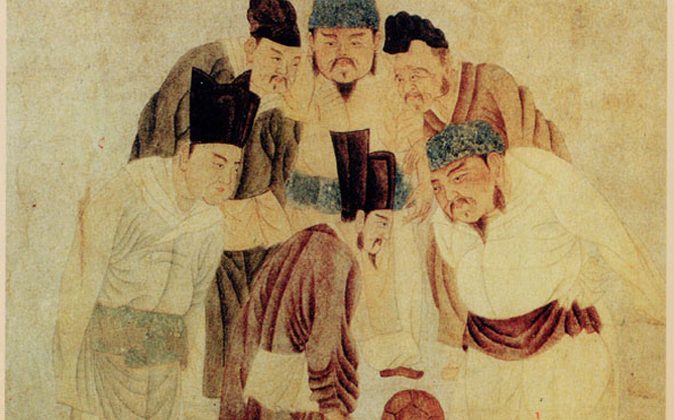



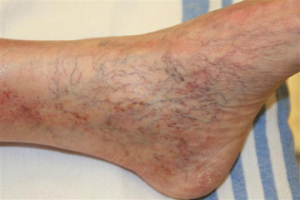
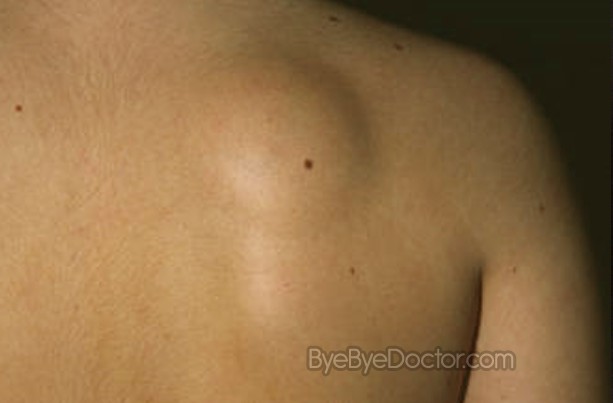
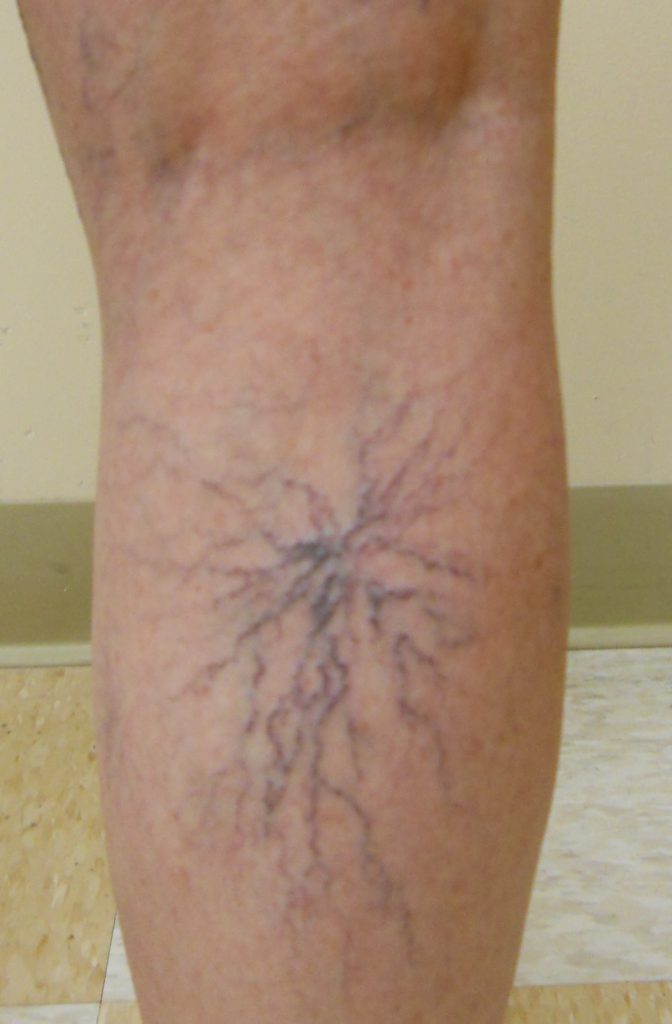

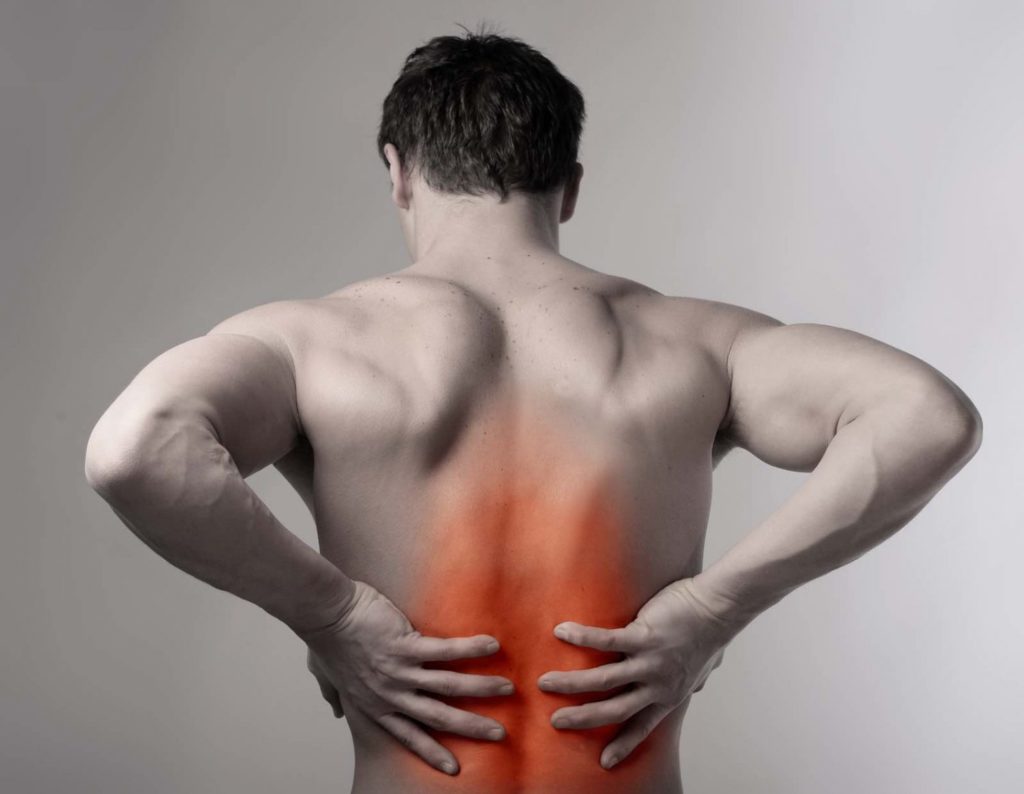
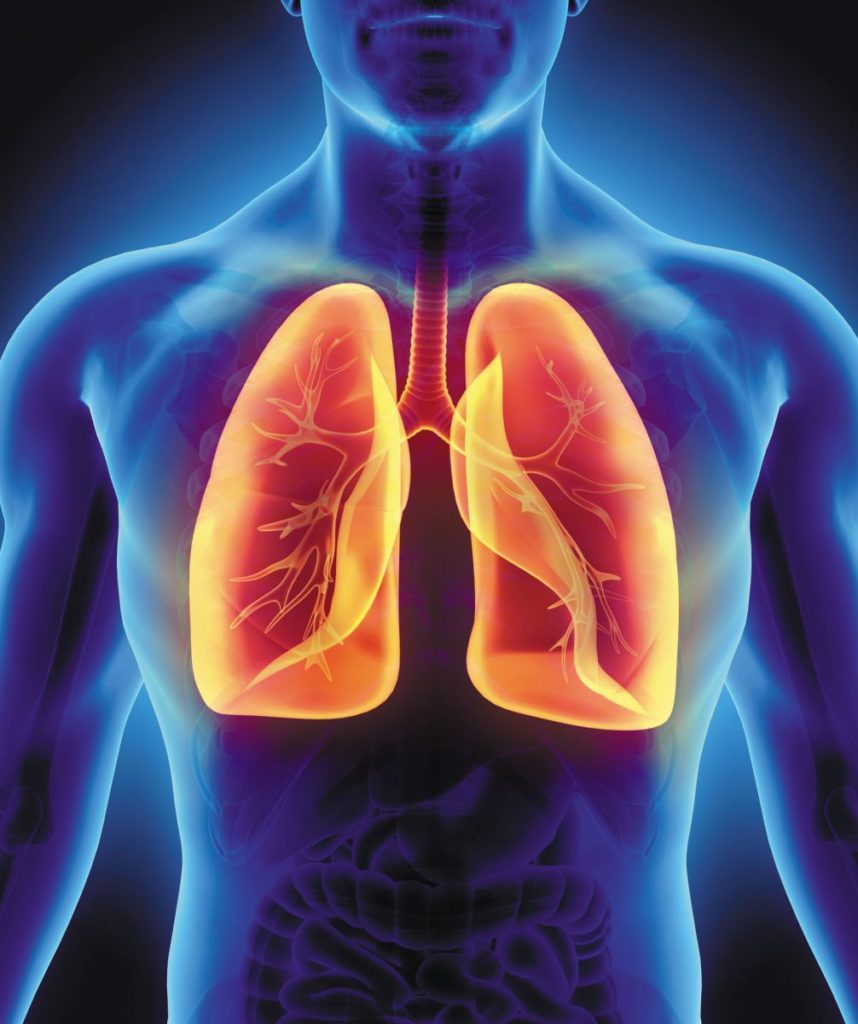
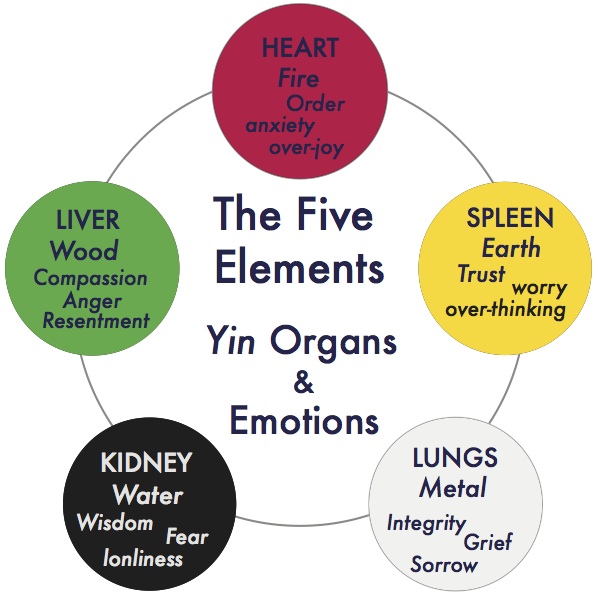
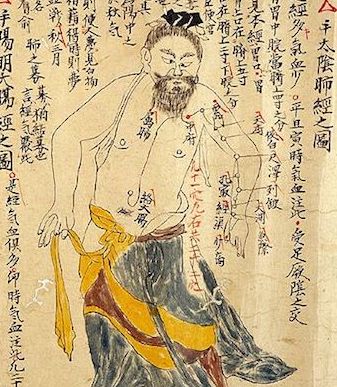
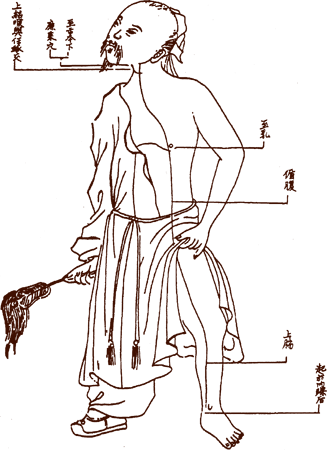
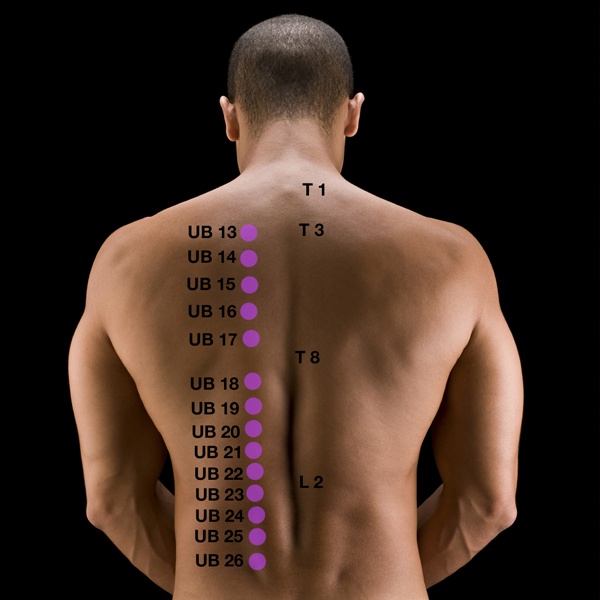
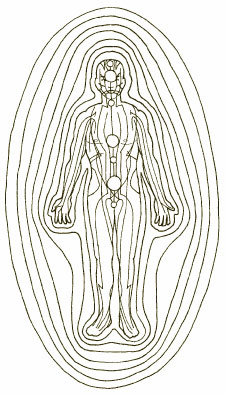

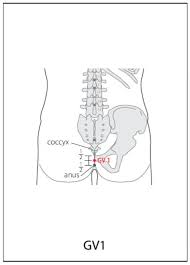
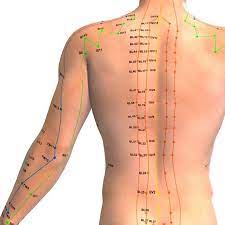


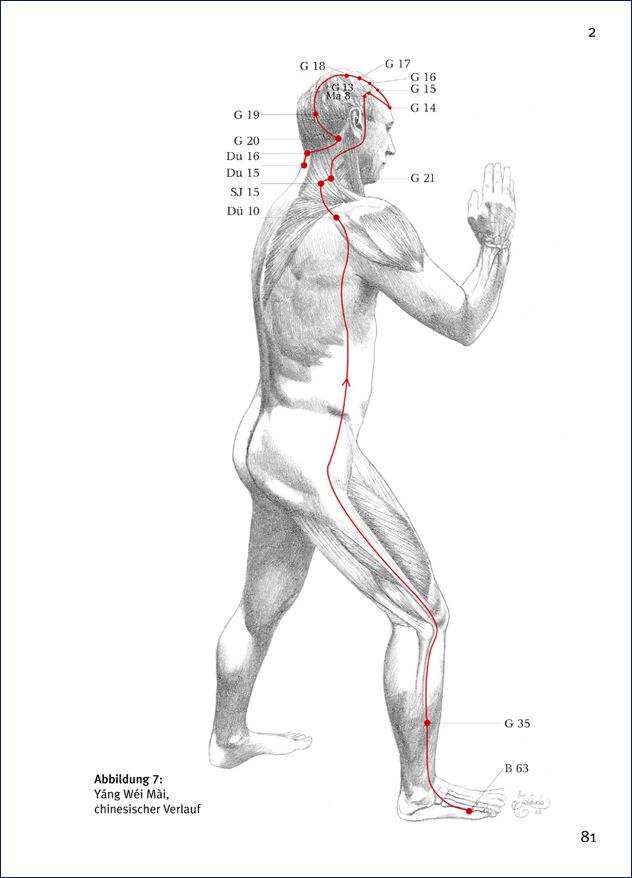




No Comments